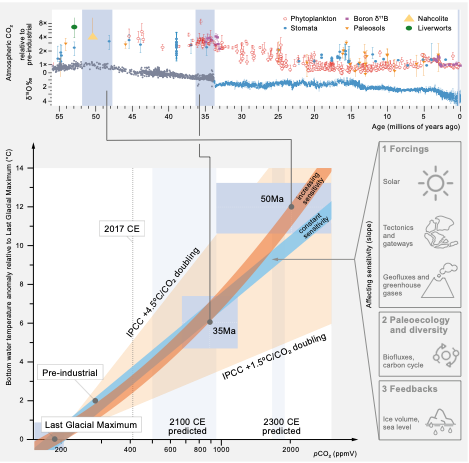- Cluster Ocean Floor
- Research Unit RECORDER
- Projects
- Earth System Sensitivity
Earth System Sensitivity
Problem statement
We will conduct a systematic analysis of “Earth-system sensitivity as a function of time and climatic state” and address the question: “How do long-term feedbacks (primarily silicate and carbonate weathering), the carbon cycle and ecosystem changes affect the total interplay between greenhouse-gas release and removal and global temperatures?” This sensi- tivity acts beyond the traditionally studied equilibrium and steady-state but shorter-term Charney climate sensitivity. By using proxy-based reconstructions of the key parameters of the global carbon cycle (ocean alkalinity, ocean and atmospheric CO2 and other greenhouse gases, global carbonate burial and diagenesis, temperature) we will gain a unique view of the transient nature of Earth-system sensitivity characterizing Cenozoic background states and boundary conditions.
All of these efforts will involve biogeochemical cycles and the endogenic carbon exchange, as well as new developments for including biological mediation of these cycles. This work will incorporate and combine new proxy developments, such as linked temperature reconstructions with existing temperature proxies (e.g., Mg/Ca and clumped isotopes), thereby reducing uncertainty.
Hypothesis
Initially, we will test the hypothesis that Earth-system sensitivity varied during the Cenozoic and is greater during warmer climatic states. Factors controlling Earth-system sensitivity may include atmospher- ic pCO2, ice cover, sea level, and global mean temperature.
Linkages
This work will closely interact with the Recorder Theme 1, and will benefit from novel Earth-system modeling capabilities to be applied in the Enabler modeling, and will provide context for the research topic ice-ocean interactions.



